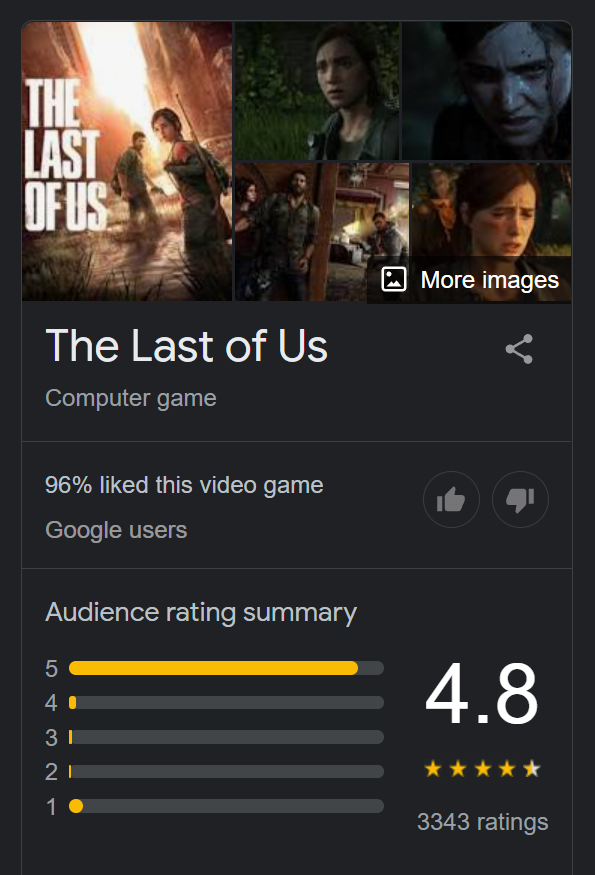Empathy through Control
The Last of Us Part 1 and Part 2 are two famous action-adventure games produced by Naughty Dog. While Part 1 received universal acclaim, the feedback toward Part 2 was quite mixed. I believe the mixed feedback was primarily caused by the phenomenon of “empathy through control”, a method developers use to influence players’ empathy toward game characters when they are playing.


Empathy in Stories and Games
In storytelling, it is important that the audience have a relatable protagonist who they can empathize with. As Robert McKee, a famous Hollywood scriptwriter, says in his book Story, “The audience’s emotional involvement (to the story) is held by the glue of empathy.” In order for the audience to engage with the story, capturing their empathy for the protagonist is essential. It is the bridge between the audience and the world of the story. Usually, the empathy can be gradually established by those relatable decisions, qualities, or background stories of the protagonist. However, in game storytelling, there is a unique relationship that develops: empathy through control. In games, the audience (the player) synchronizes with the protagonist in a more personal way. The protagonist acts, moves, and kills under the player’s control. Hence, there is a deeper and more subjective feeling between the player and the protagonist.
Empathy through control in The Last of Us series
Empathy through control is a powerful tool widely used in both Parts 1 and 2. At the start of Part 1, the director lets the player play Joel’s daughter, Sarah, instead of Joel, because the player is more terrified playing a kid.(3:55 in the video) The game also makes the player take control during intense and nervous moments, like running from zombies, instead of interrupting with cut scenes, so the player can feel more attached to the characters.(4:44 in the video) In fact, their emotional bond is so strong that in the end of Part 1, when Joel kills all the innocent people in the hospital just to save Ellie, the player still loves him. It is because the player has grown empathy for Joel and understands how he loves and sees Ellie as his daughter throughout the journey.
What goes wrong in Part2?
If empathy through control is such a powerful tool, why is Part 2 not as successful as Part 1? It is because empathy through control becomes a double-edged sword. In Part 1, the bond between the player and Joel is so strong; it is natural for the player to continue to use Joel as the anchor through which to receive the story of Part 2. However, in the beginning of Part 2, Joel dies under the hand of a new protagonist, Abby, who kills him to avenge her father. Therefore, the main connection between the player and the story is destroyed. The game attempts to let the player sympathize with the two opposite sides by letting the player play both Abby and Ellie. However, this way of telling stories is not successful because the player not only hasn’t formed a bond with Abby, but the player’s sentiment to Joel has also become too big of an obstacle for the player to form such a bond. Therefore, whenever the player switches from Ellie to Abby, the player stops engaging with the story, because each moment playing Abby becomes agony.
Conclusion
In conclusion, Part 2 would tell a good story if it let the player empathize with Abby first before killing Joel. By not doing so, Naughty Dog inadvertently cut the main empathetic tie between the player and the game.